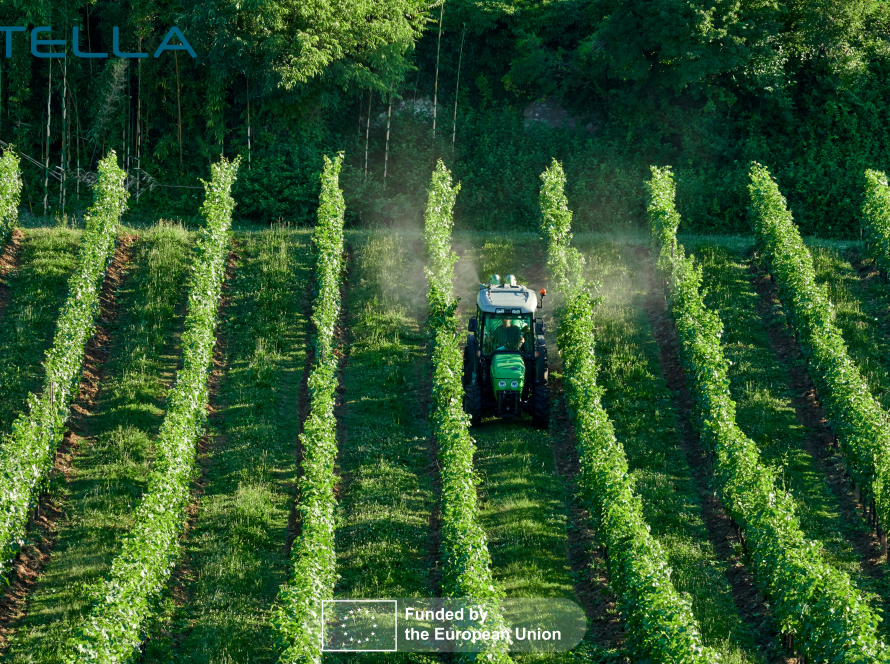By Dimitra Fourkalidou | Head of Communications | reframe.food
The European Union is the world’s leading producer, consumer, and exporter of olive oil, responsible for around 67% of global output [1]. Within Europe, the great olive-growing nations of Spain, Italy, Greece, and Portugal together account for more than 98% of this production [1], making olive cultivation both a cultural emblem and an economic backbone of rural Mediterranean life.
Amid this landscape, Greece stands as the EU’s second-largest producer, with forecasts for 2024/25 estimating about 250,000 tons of olive oil, second only to Spain [2]. Olive oil is far more than a commodity here: it is a heritage crop, interwoven with Greek identity, diet, and economy.
In the region of Attica, this heritage takes on a particularly local face. Olive groves here, like many across Europe, are increasingly under mounting pressure from destructive plant diseases and the intensifying effects of climate change.
Pests striking at the heart of olive orchards
Two pathogens are especially challenging for olive producers. Verticillium dahliae, the fungus behind Verticillium wilt, is among the most destructive olive diseases worldwide. It can kill trees, slash yields, and even lower the quality of olive oil produced. Research shows that certain Greek olive varieties offer higher resistance, providing pathways for more sustainable management [3].
The second major threat, Pseudomonas savastanoi pv. savastanoi, causes olive knot disease. Marked by tumorous galls on stems and branches, it spreads rapidly and can infect an entire orchard within a year.
Together, these pathogens highlight the urgent need for better surveillance and innovative control strategies.
Climate change compounding the challenge
As if pests were not enough, olive production faces a growing climate crisis. A recent study presented at the EGU General Assembly shows how Greece’s groves are increasingly vulnerable to extreme weather [4]. Heatwaves, droughts, and shifting rainfall patterns disrupt flowering cycles, reduce irrigation resources, and weaken tree resilience, leaving them more susceptible to disease.
With harvest losses already driving up olive oil prices across Europe, adaptive measures are urgently needed. Sustainable soil and water management, combined with smart monitoring systems, will be essential to build resilience.
Learning from nature and technology
Across the Mediterranean, farmers are already experimenting with solutions. In Crete’s Sitia region, nature-based practices such as cover crops, water conservation, and soil health improvement are helping safeguard olive groves against climate stress [5]. These examples show how traditional knowledge and modern innovation can work hand in hand.
This is where the STELLA Horizon Europe project steps in. Through its Use Case Pilot 6 in Attica, STELLA will deploy digital pest surveillance tools. Using both historical data and real-time field testing, the pilot will serve as a testbed for early-warning systems that support farmers and regional authorities in reducing crop losses and pesticide dependence.
Safeguarding the future
The olive tree has long stood as a symbol of endurance. Today, preserving this heritage demands new approaches.
By tackling both biological threats and climate stress, projects like STELLA are equipping Greek olive producers with the tools they need to adapt, so that the story of Greece’s olives continues for generations to come.
References
[1] European Commission. Olive oil sector overview.
[2] Olive Oil Times (2025). Greece’s Olive Oil Yield Exceeds Projections.
[3] Markakis, E., & Kostelenos, G. (2022). Evaluation of Olive Varieties’ Resistance for Sustainable Management of Verticillium Wilt.
[4] Koutroulis, A., Daliakopoulos, I., & Grillakis, M. (2025). Climate Change Impacts on Olive Oil Production in Greece: Challenges and Pathways to Resilience. EGU General Assembly 2025.
[5] Revolve Media (2023). Sitia’s Olive Cultivation: Climate Resilience and Nature-Based Solutions.



